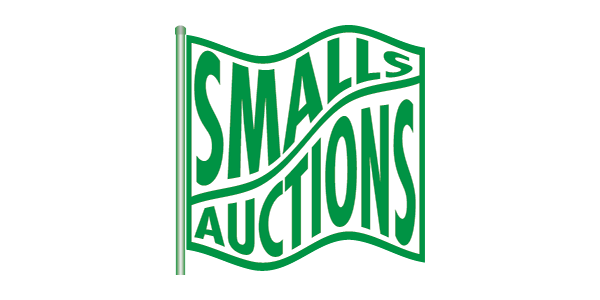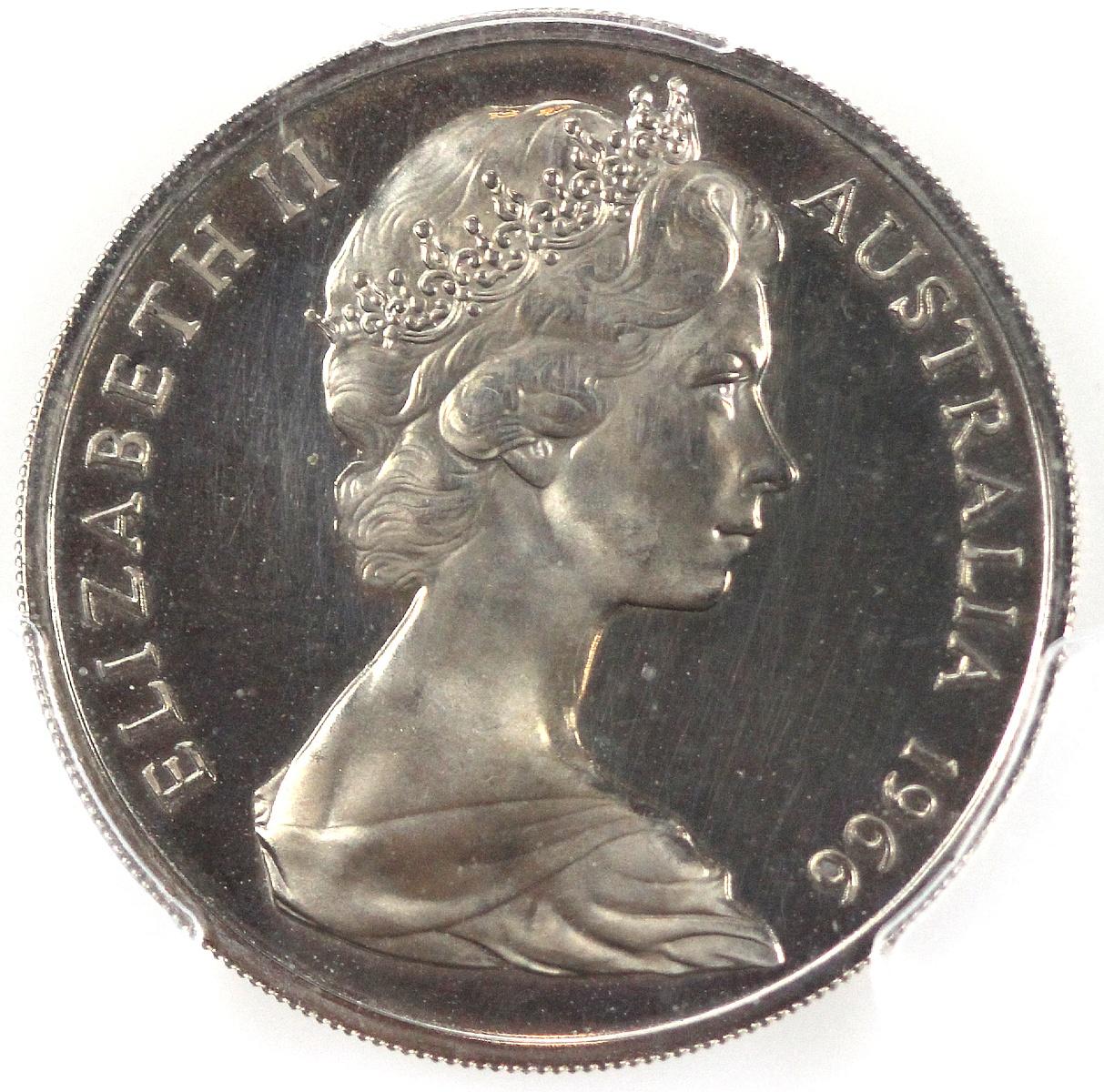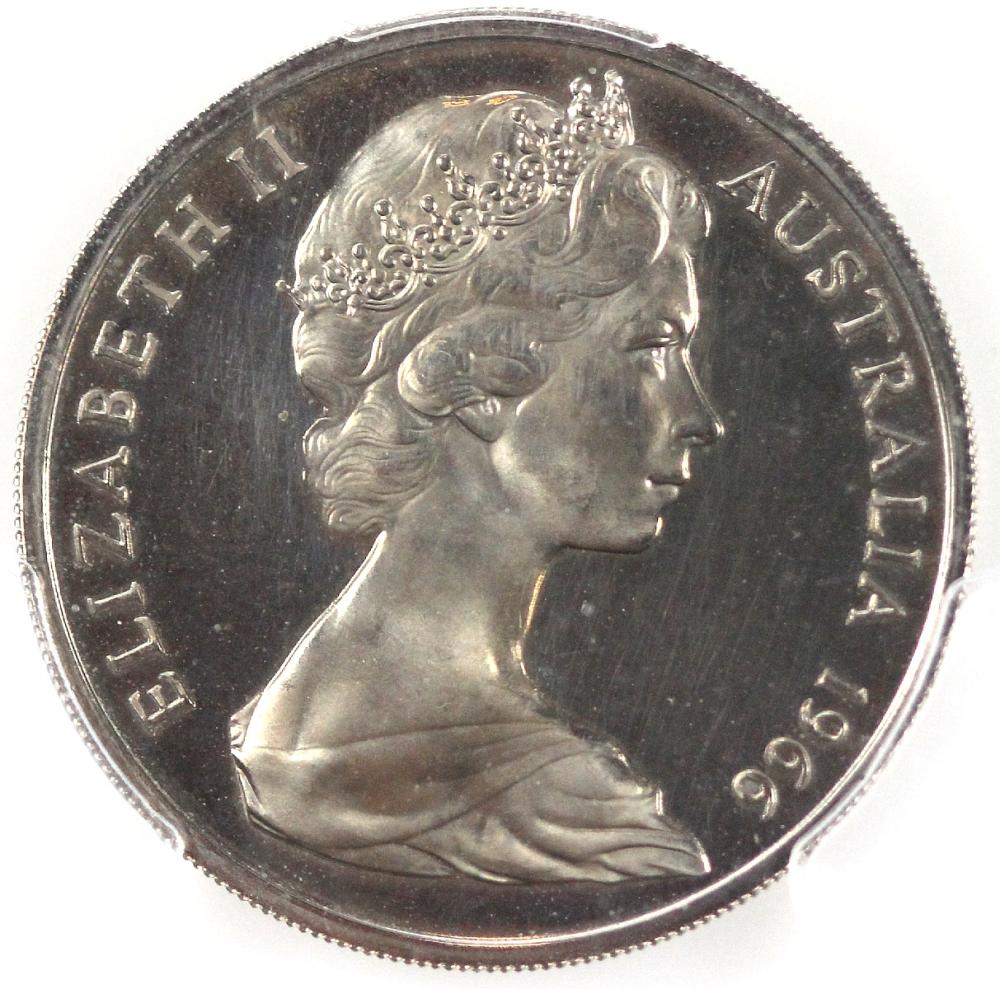Lot 1

The only example in private hands of a 1966 Proof 20c prepared on London dies. Comes with a 'Letter of Authenticity' from the Royal Australia Mint. We have included a 'Canberra' 1966 Proof 20c graded PCGS PR68 DCAM and a 'polished' Proof of a Great Britain 1971 10 New Pence for comparison purposes.
-
Exhibited:
- Coins, Australia & New Zealand Literature:
- Coins, Monies & Stamps Medium:
- 355 Circa:
- Collectibles Notes:
- In 1990 a collector noticed in his collection a strange Australian 1966 Proof 20 Cent like no other and, perhaps suspecting that he had been sold a 'dud, sent it off to the Royal Australian Mint (RAM) Canberra for their 'expert' opinion. After carefully examining the coin, the Mint declared it a genuine Proof 20 Cent coin but, not the typical 'Canberra' struck proof of which 18,110 were made to be included in the inaugural 1966 Australian Decimal Proof sets, but a 'London' struck proof which matched the sole example the Mint held in its collection. Mr R Gardiner, the Quality Manager at the RAM, wrote that "the coin you have submitted has been examined in the Mint laboratories (and) matches the characteristics of a genuine 20 cent Australian coin with the exception of mass which is below specification. However, the mass is similar to that of a 1966 Proof London 20 cent which is held in the Mint museum." This weight difference can also be observed in the circulating 'Canberra' and 'London' 20 cent coins. However, if the RAM had examined the coin more closely it would have discovered other marked differences. Following tradition, the RAM, as the lead mint in producing Australia's 1966 coinage did not feel it necessary to distinguish its production with a mint mark, and so it was left to the Royal Mint (RM) in the unusual role as a sub-contractor to employ a deliberate 'marker' to separate its production from Canberra's. If you look closely the 'London' struck coin is typified by having only 'one' eyelash on the Queen's effigy whereas the 'Canberra' coin has two. As well, the effigy on the RM Proof when measured from the tip of the Crown to the truncation is smaller (24mm) than on the RAM Proof (25mm) and so sits further from the perimeter of the coin. Interestingly, the 'Machin' portrait of Queen Elizabeth II first used on the corresponding British 10 'new pence' coins of 1971 also measures 24mm and also has 'one' eyelash (albeit lightly-struck) suggesting that the RM called on the same master obverse die that it used 5 years earlier on the Australian coin. And, even to the naked eye the RAM Proof 20c has heavy frosting on the raised designs against a 'mirrored blank', whereas the RM Proof has no significant two-tone effect with only minimal frosting of the highlights on a 'polished blank', very reminiscent of coins in British Proof sets of the era. How this 'London' Proof 20 Cent coin made it into private hands is not known but, as it is usually best practice for museum collections to hold at least two specimens of a coin so that the obverse and reverse can be simultaneously displayed, the admission that "a similar coin is held by the Mint" may hint at its source. It has been speculated that perhaps the coin made its way out of the RAM collection when it was 'gifted' to the notorious coin forger David Allan Gee who had unfettered access to the Royal Australian Mint Collection in the 1970s. Gee financed his collecting interests by running a string of blue movie houses which were known to have been frequented by many influential people. This may explain his Svengali-like hold over James Henderson, the Controller of the Royal Australian Mint, who although aware of Gee's unsavoury sideline still considered him a close confidant. Henderson was known to have 'gifted' important coins and banknotes to Gee from the RAM collection in recognition of professional advice he supposedly provided, and the 1966 'London' polished Proof 20c coin could well be one such coin. What is certain is the Royal Australian Mint laid no claim to the coin in 1990 when it was sent in for verification, and so this 'museum' piece remains in the public domain. We have noted that there are three proof coins identified by the PCGS No. 524531.63 as the 'London' variety, however the other two coins have been wrongly labelled and can be clearly identified as 'Canberra' struck if you refer to the PCGS picture gallery. In our Sale Smalls Auctions offers the 1966 'London' polished Proof 20c PCGS PR63 CAM which is unique in private hands.
Accepted Forms of Payment:
American Express, MasterCard, Money Order / Cashiers Check, Paypal, Visa, Wire Transfer
Shipping
AUSTRALIA: Purchases within Australia will be charged a MINIMUM SHIPPING FEE of $5.50 and will be sent by Registered Post. Additional insurance is optional at the buyer's expense.
INTERNATIONAL: Overseas purchases will be charged a MINIMUM SHIPPING FEE of $20.00 and will be sent by Registered Post International. Additional insurance is optional at the buyer's expense.
Both Australian and International packages are traceable in transit and require a signature on delivery.
Smalls Auctions
You agree to pay a buyer's premium of up to 20% and any applicable taxes and shipping.
View full terms and conditions
| From: | To: | Increments: |
|---|---|---|
| A$0 | A$249 | A$5 |
| A$250 | A$999 | A$10 |
| A$1,000 | A$4,999 | A$25 |
| A$5,000 | A$9,999 | A$50 |
| A$10,000 + | A$100 |










